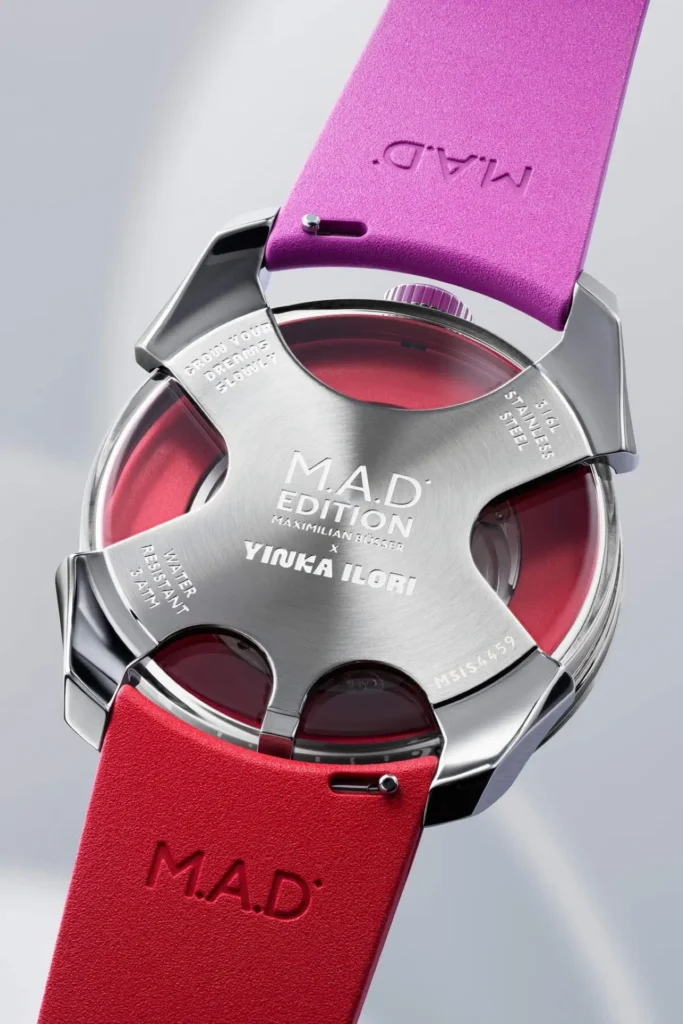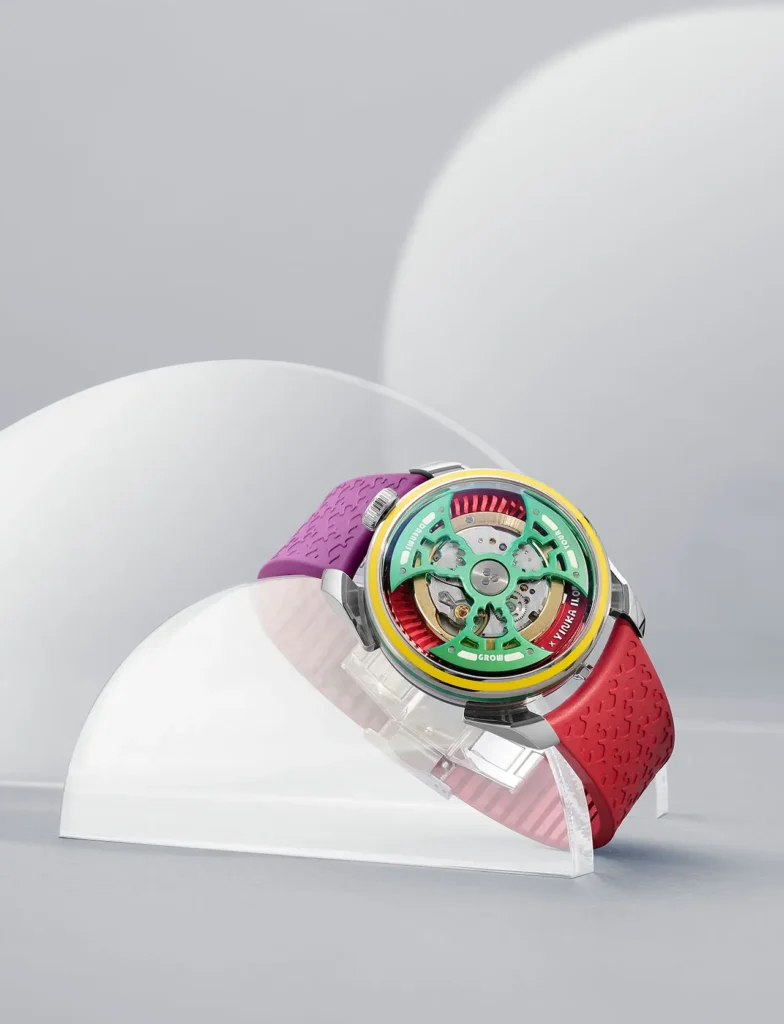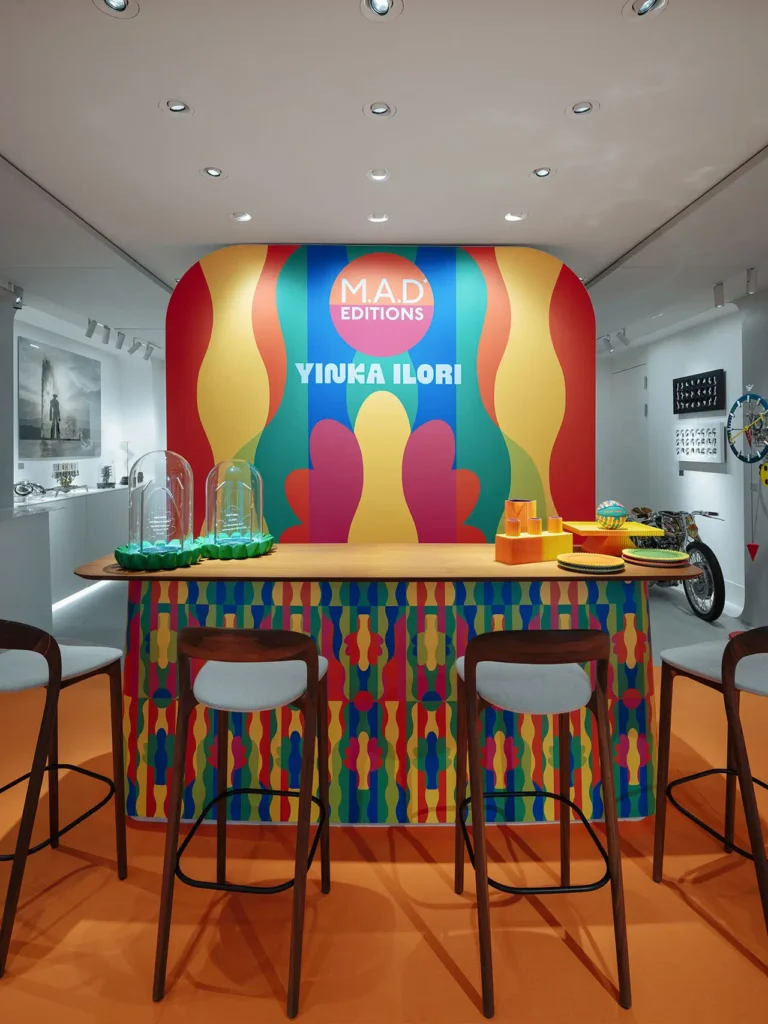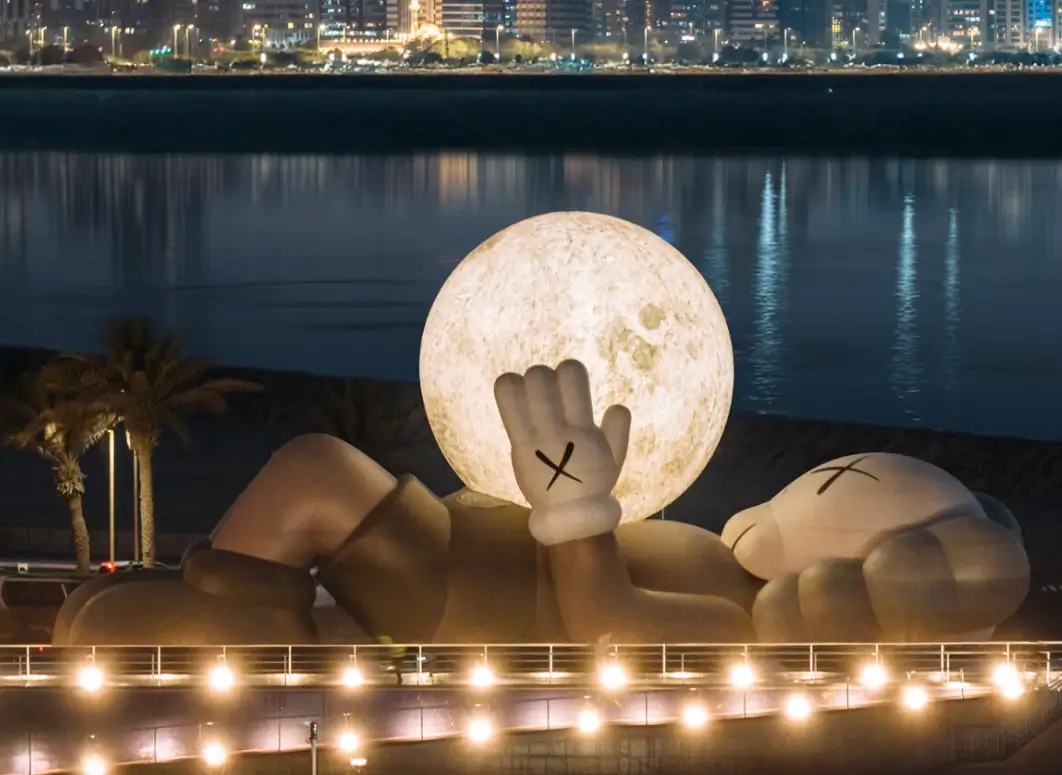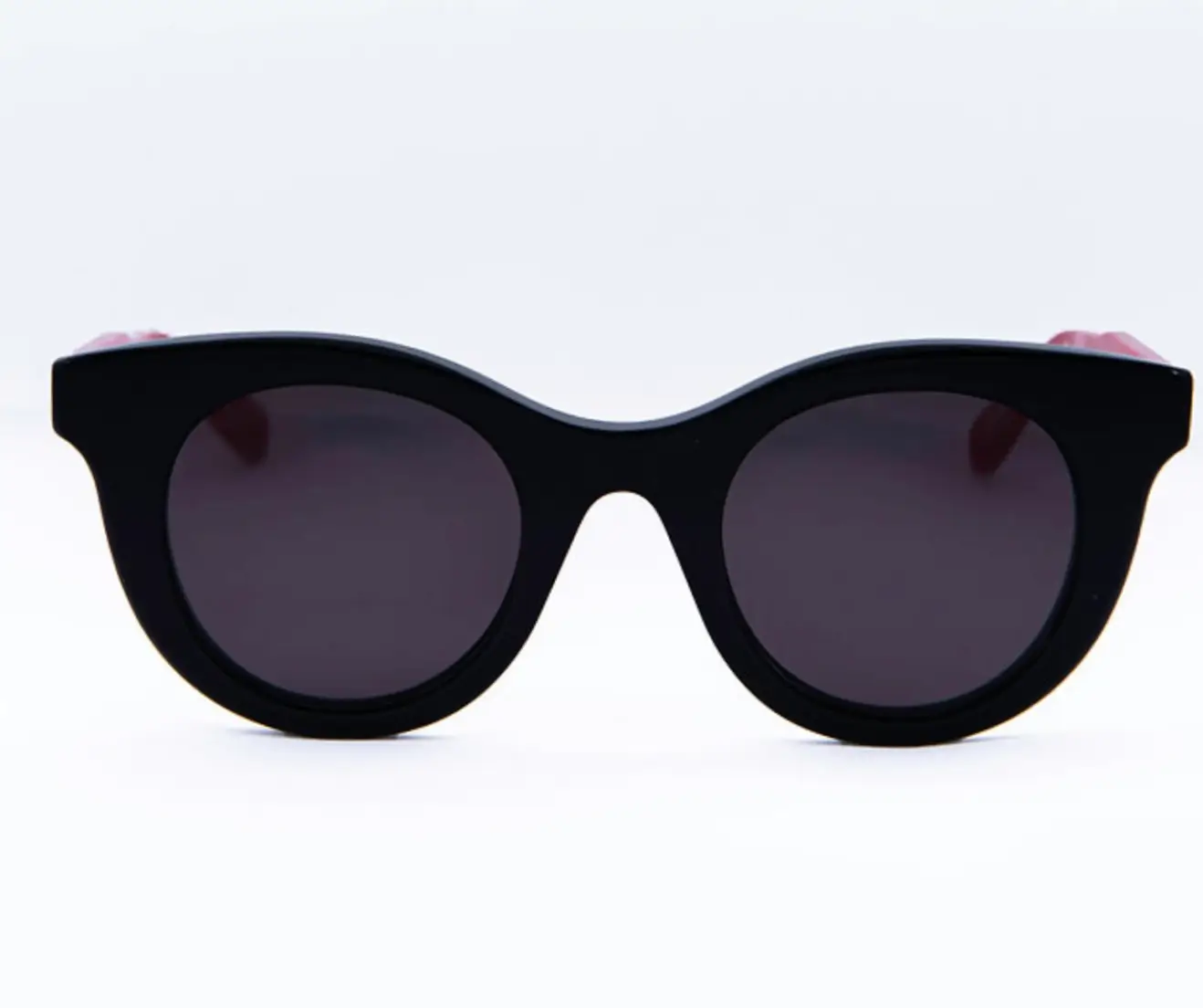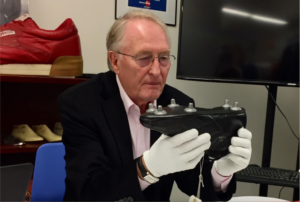There are merges that feel inevitable in hindsight—pairings that, once announced, make it difficult to imagine the industry without them. The meeting of Yinka Ilori and MB&F is one of those rare creative mergers: a technicolor storyteller known for turning the built environment into a stage for optimism, and a high-horology maison that treats mechanical imagination as a sculptural art form. Together they arrive at a moment when watchmaking desperately needs new languages, new lenses, and new emotional stakes. Ilori’s world—bold geometries, electric palettes, West African inflections, and the sincerity of play—offers exactly that.
lang
Yinka Ilori has spent the last decade reframing British and global design through an aesthetic rooted in narrative exuberance. His early upcycled furniture pieces—hybrid objects inspired by parables from his British-Nigerian upbringing—evolved into large-scale public installations, museum commissions, architectural interventions, and brand connections that treated color as communal medicine. In a culture fatigued by neutrality, Ilori made brightness permissible again. He reminded the world that color is not frivolous; it is a declaration.
Haute, traditionally anchored in restraint, seriousness, and scarcity, was slow to accept this. But Ilori’s meteoric rise aligned with a generational shift. A new audience, shaped by digital abundance and cultural pluralism, was ready for luxury that felt alive. The result: a recalibration of taste in which joy, vibrancy, and emotional generosity became not only legitimate but aspirational.
MB&F—Maximilian Büsser’s horological laboratory known for kinetic creativity—saw the future coming long before most. The brand embraced the concept that watches could be sculptures, creatures, machines, even characters. Now, with Ilori, it expands that philosophy to include the emotional spectrum of color and storytelling. It is a natural, if surprising, fit.
stir
To understand the depth of this pairing, one must understand MB&F’s ethos. The brand’s machines—Horological Machines and Legacy Machines—are not watches as much as thought experiments in wearable engineering. Turbines, domed crystals, inverted mechanics, optical illusions, and cinematic theatrics define its identity. Where traditional watchmakers refine complications, MB&F invents them.
Ilori, conversely, is not a product designer, but a cultural storyteller. His artistic language excels in environments: playgrounds, bridges, seating structures, gallery installations, and public squares. Translating that scale of spatial joy into a wrist-sized object poses a challenge—and an opportunity.
MB&F allows Ilori to explore a new frontier: the microscopic world of mechanical intimacy. Where his architecture speaks to crowds, a watch speaks to one person at a time. It is poetry whispered into the skin.
Ilori allows MB&F to step into a different dimension too—not of engineering, but of affect. The maison has built robots, jellyfish clocks, flying machines, retro-space instruments, and mechanical creatures. But rarely has it engaged with an artist who treats color as a medium of healing and who believes objects can be carriers of optimism. For MB&F, this collaboration is not merely aesthetic; it is emotional.
The partnership is, at its core, a conversation about what time feels like.
phil
Color is deceptively complex in watchmaking. It affects legibility, material integrity, finishing, and even the behavior of light under sapphire crystal. Ilori’s palette—hot pinks, sunlit yellows, sky blues, forest greens, coral oranges, ultraviolet purples—pushes the boundaries of what luxury watch dials typically attempt.
Ilori’s challenge was to avoid superficial application. Paint is not his vocabulary; pattern is. Rhythm is. Geometry is. The watch needed to feel like an Ilori artwork, not an Ilori-themed object.
What emerges—conceptually—is a piece defined by layers of chromatic intention:
The dial as a mini-architecture
Ilori treats the dial like the façade of a pavilion: a field where spatial rhythm, proportion, and pattern intersect. The indices repeat like architectural columns, each tinted differently to evoke communal diversity—no hour identical to another, yet all contributing to the structure of the day.
bezel
Rather than selecting hues, Ilori builds palettes inspired by Yoruba storytelling traditions—colors symbolizing energy, protection, renewal, and shared memory. These are not decorations; they are emotional codes.
the case and crystal as light amplifiers
MB&F’s signature domed sapphire becomes a lens through which Ilori’s colors refract, shift, and saturate depending on angle. Time becomes a cinematic phenomenon.
movement architecture as hidden story
MB&F’s movement finishing is often mechanical theatre. With Ilori, subtle accents—micro-anodized screws, energy bridges touched with color, plates engraved with pattern—turn the mechanism into a private artwork visible only to the wearer.
The watch is therefore not simply a multispectral novelty. It is a study in micro-storytelling.
culture
Ilori’s MB&F collaboration lands in an era when the design world is finally beginning to dismantle its own gatekeeping. For decades, Eurocentric minimalism dominated high design and horology alike. Complexity—especially cultural complexity expressed through color—was deemed unsophisticated.
But Ilori, like Virgil Abloh before him, expands the boundaries of what luxury can mean.
fin
This collaboration is not about a watch. It is about the expanding universe of contemporary luxury, where emotional design, cultural storytelling, and mechanical art intersect.
Yinka Ilori brings a way of seeing the world—full of vibrancy, community, optimism, and narrative depth. MB&F brings a way of building it—through precision, imagination, and unapologetically unconventional engineering.
No comments yet.





